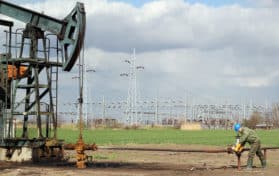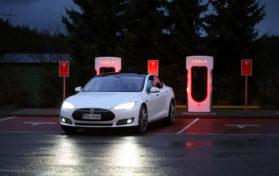
Across America, consumers are paying more for gas, groceries, utilities, and other every day necessities. Grocery store shelves in some areas are still largely empty, and what consumers are finding on shelves is costing more than they have in decades. Between the supply chain shortage and inflation, consumers are seeing the highest prices in four decades.
The Labor Department released a report on Friday stating that this year’s inflation is the highest and fastest-growing since 1982. Prices soared in November, growing 0.8 percent from October.
The consumer price index measures the price of goods ranging from gasoline to groceries, health care and even rent; this November these prices were 6.8 percent higher than November 2020. Consumers haven’t seen this type of jump since June of 1982. Joe Bursuelas, the chief economist at RSM, said, “November pricing data offered no relief for American households as energy and transportation costs continued to drive prices higher.”
The surge in prices is exacerbated by the holiday season, when people plan to celebrate the holiday season with travel, holiday gifts, and elaborate meals.
Consumers are feeling the greatest wallop to their wallets in the following areas: energy, food, vehicles, as well as in appliances and household goods.
The end of the year as well as into the spring are typically times when people will invest in appliances, furniture, and tools. The Labor Department looked at this area to determine exactly what products were seeing the greatest increase in price. A holiday favorite (as far as gifts are often concerned) is the bicycle. This year, the price of a bike is up nine percent compared to November 2020.
Furniture is a commodity that sold well during the pandemic. People were at home, and they chose to invest in upgrades to their home, including new living room suites or bedroom suites. Furniture prices in November 2021 are up twelve percent from the same time in 2020.
Laundry equipment is up 9.2 percent, and another popular holiday gift for the handy folks in the family – tools – is up 6.9 percent in November 2021.
Anyone in the market for a new or a new-to-you vehicle is paying a great deal more for the desired item. Used cars jumped 3.35 percent from October 2021 to November; this area has seen drastic price increases during all of 2021. In total, pre-owned car prices are up 31.4 percent from this time in 2020.
Those traveling could be affected by rental car prices, which are up 37.2 percent from November 2020.
Certainly, all consumers are affected by the price of food and gas; however, utilities are more costly this year than in 2020.
Between October of this year and the end of November, energy costs rose 7.5 percent. However, the cost of heating one’s home (as well as other utilities) is up a whopping 33.3 percent from November of 2020.
Economists are still pointing to supply and demand as the chief factor in surging prices of gas and oil. Gasoline prices are up an astounding 58.1 percent from November 2020; heating oil is up 34.3 percent from the same time period.
According to AAA, the average nationwide gas price is $3.35 per gallon. This time last year, that same gallon of gas was $2.15, with many states across America averaging gas prices under $2. California is seeing gas prices over $4 per gallon as of November 2021.
The Energy Information Administration says that Americans are likely to spend 30 percent more this year on natural gas while heating oil is up a whopping 43 percent.
Food is another area in which consumers are feeling the pinch in their pocketbooks. Prices rose 0.5 percent from October 2021 to November 2021; this is an increase in 6.8 percent from the same time period in 2020. Beef is up by nearly 21 percent; bacon’s price has seen a similar increase. Pork is up 12.7 percent, and fish and poultry prices are up by at least eight percent. In addition, staples such as eggs are up eight percent. Coffee is up nearly eight percent, with cereal prices up just over five percent.





